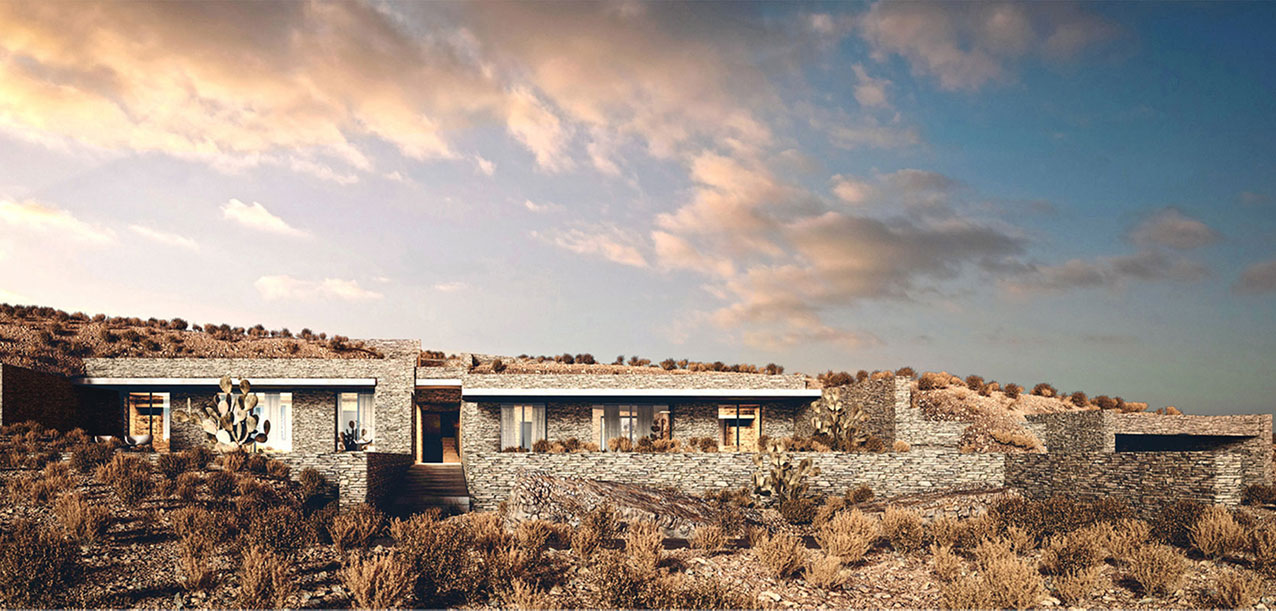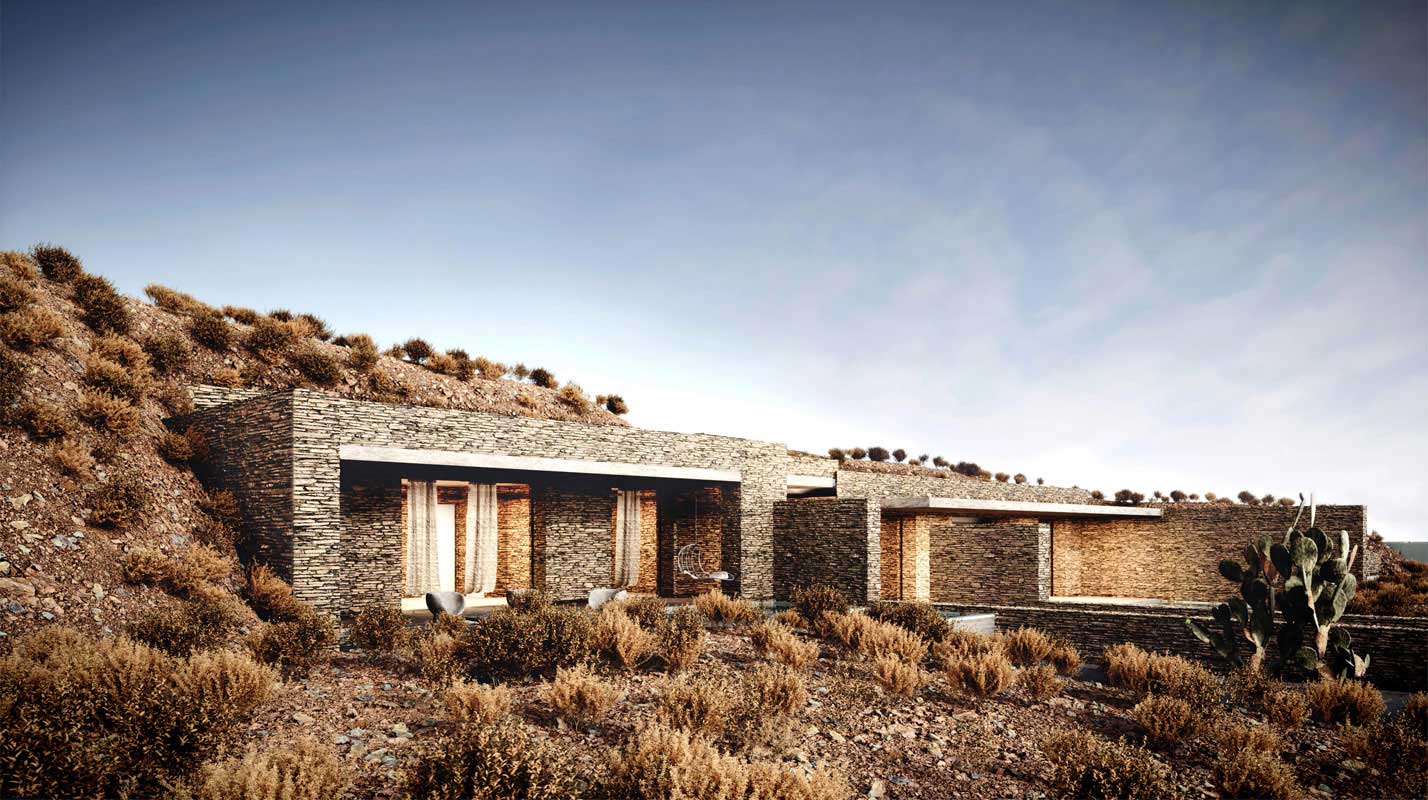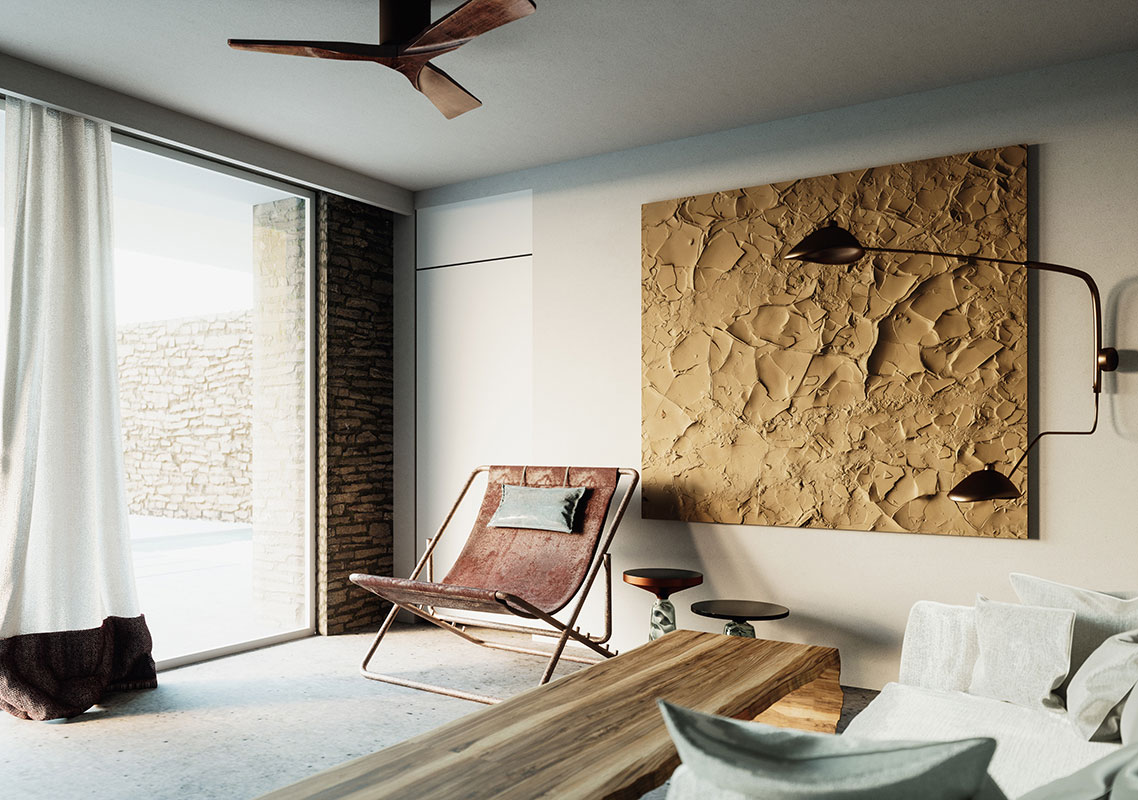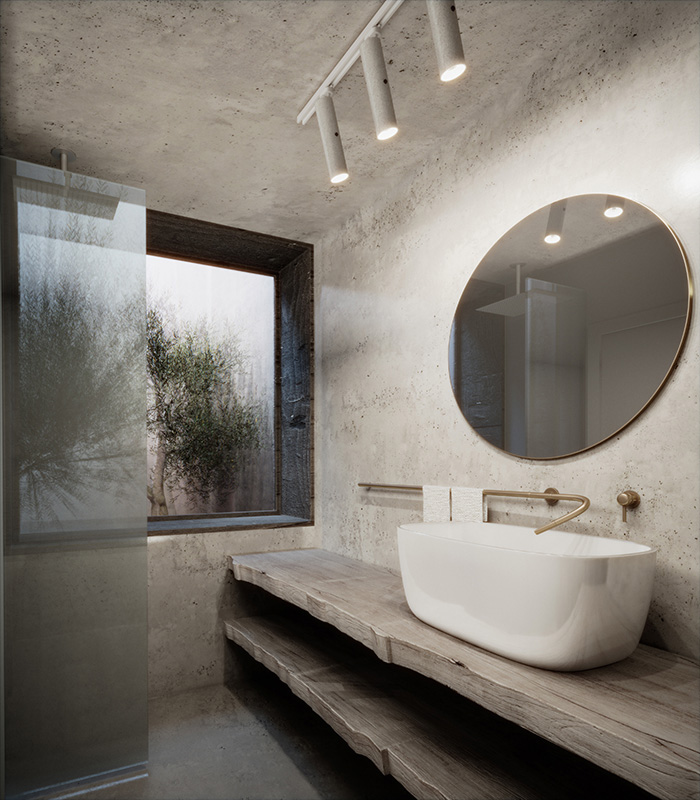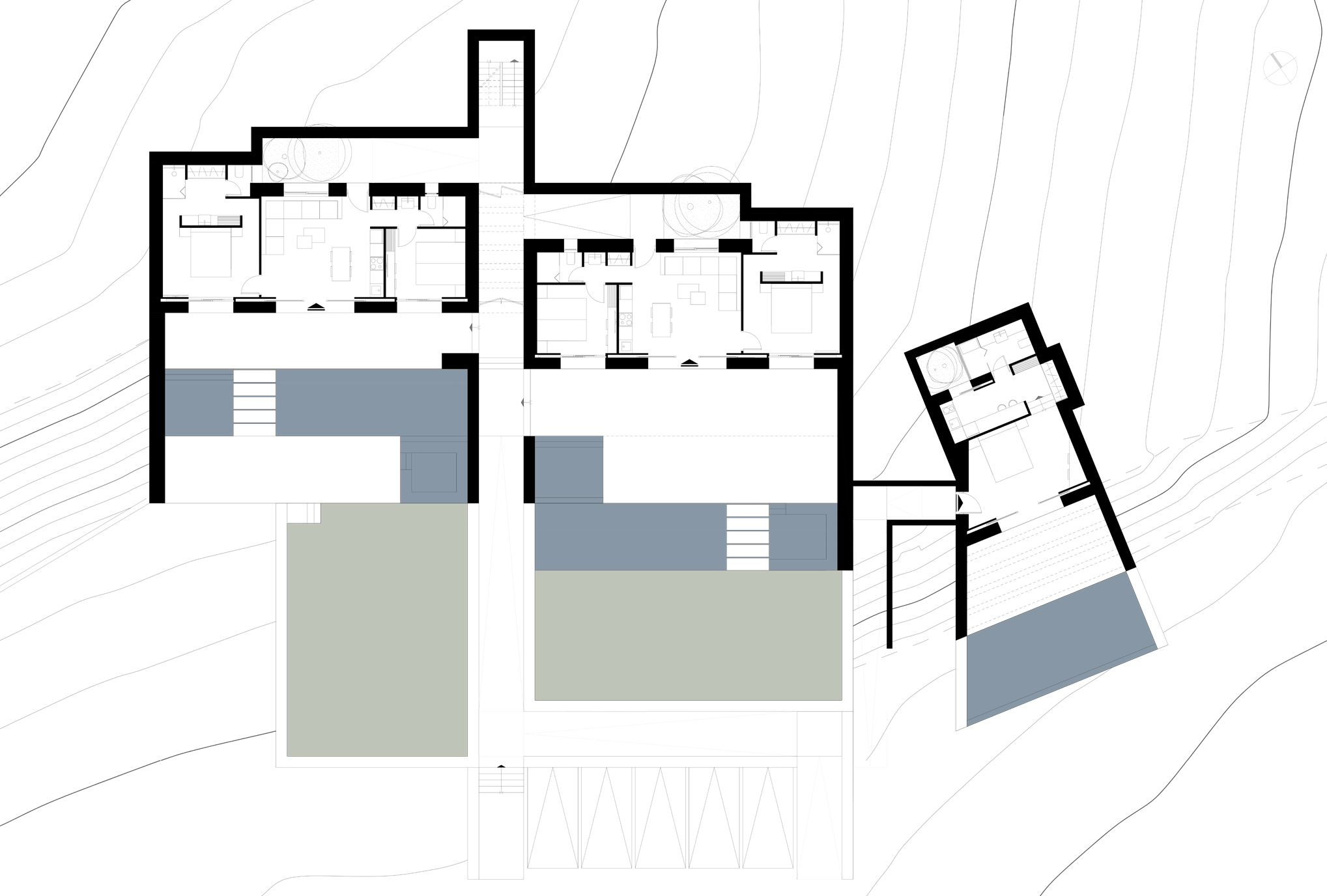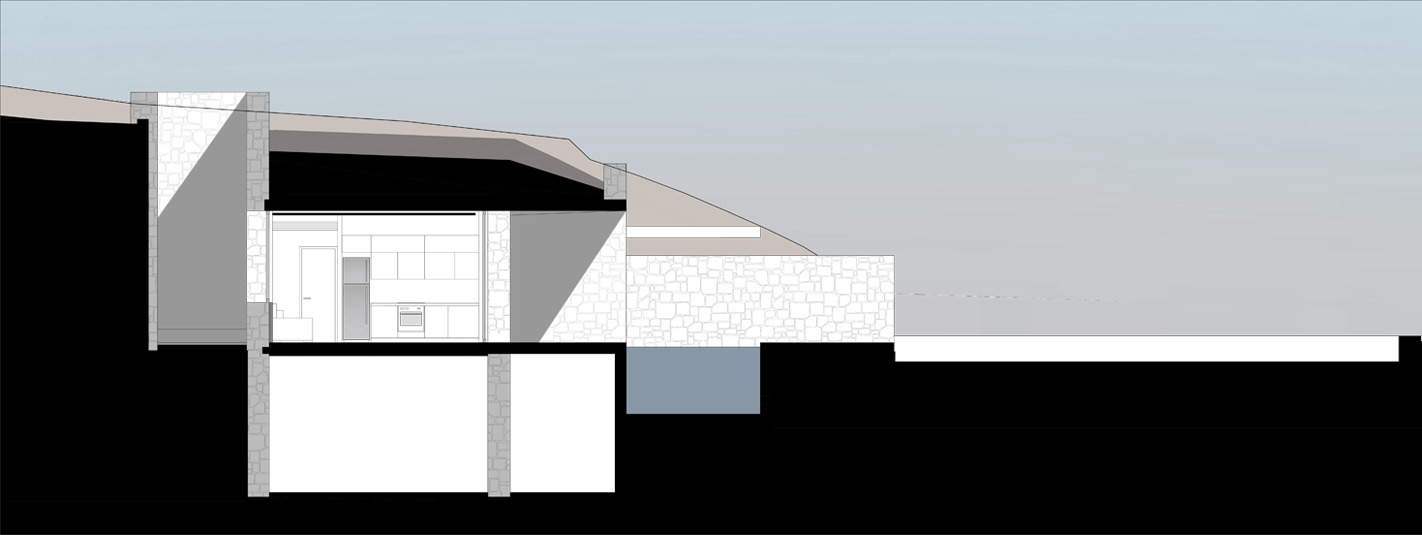Design of three cave summer homes in the island of Milos, landscape and pool spaces design.
The building complex is comprised of a larger building divided in two independent houses with three main rooms each and a smaller building that houses a studio. A steep slope in the middle of the plot creates two distinct levels with no visual contact between them. Favourable southern and south-western orientation is further benefited from an exquisite view of Milos’s port. Northern orientation requires careful handling as the Cycladic Islands are subjected to severe winds during the summer months.
The houses are arranged in the lower of the two distinct levels and inside the slope. They resemble incisions in the terrain as if they’ve been curved out of the rock. The buildings develop along the direction of the slope’s contours, but also linearly along the main façade of the site, ensuring natural daylighting from the south and sea view to all main internal spaces. The building complex is adjusted to the terrain along the length and height of the slope, aiming to be read as a natural consequence of the landscape, its footprint kept to a minimum. Finally, the buildings will be constructed out of masonry walls, re-using the stone from the excavated site, in an attempt to re-compose the products of excavation to the built environment.
The hollowed out arrangement of the residences was chosen not only as a way of integrating and adjusting the buildings to the terrain, but also for the bioclimatic performance of cave houses. Protection from strong winds and thermal comfort conditions are among others, important advantages of cave houses. Interior temperatures are easily maintained in 20 ºC, since the buildings are surrounded by soil that has constantly 18 º C temperature. In addition, other bioclimatic methods in particular (air) shafts are used through-out , in order to maximize daylight during Winter, provide cooling and prevent from overheating during the summer months, while ensuring adequate cross-ventilation all year round. Furthermore, the shafts create better lighting conditions and insert planting features to the interiors.
The design of the landscape includes a group of terraces of different qualities and the construction of swimming pools, baby pools and Jacuzzi. Outdoor spaces partly covered with a roof, a canopy or a concrete pergola provide shadow and cooling and prevent from overheating of the façade and from the effect of glare. On the contrary, roofless terraces are provided for the residents and water feature users to enjoy the sun by day and the sky by night time. Planted spaces are arranged by way of retaining walls – when required – for the smooth adjustment to the natural ground and by small scale masonry features that ensure independency and privacy. Space is balanced between public and private, encourages resident’s affiliation, while protecting their individuality.
Contemporary materials that blend in well with the Cycladic landscape are used in addition to local stone from the excavation site; aluminum windows that allow large openings, exposed concrete features on exterior ceilings and pergolas, white plaster for the interior wall coatings and plaster cement for flooring.

